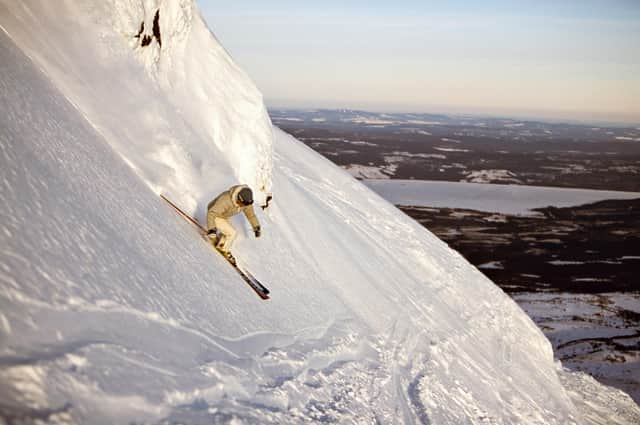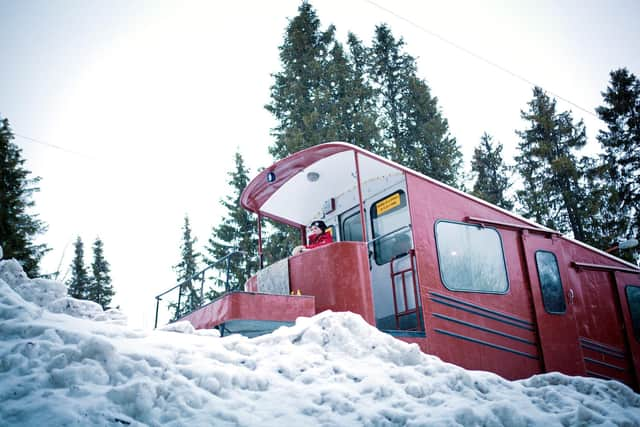Åre: How a century-old Swedish ski resort points the way to a sustainable future


There's a steady hum of conversation, broken intermittently by bursts of laughter. A few of the keener passengers already appear to be wearing some or all of their ski gear – and why not? The first lifts at Åre start spinning at 8.30am, the train is due to get in half an hour after that, and it's only a ten minute walk from the station to the bottom of the slopes. If there are fresh tracks to be had first thing in the morning (and the forecast suggests there might at least be a light dusting overnight) there's no reason for anyone on the ski train to miss out.
At the risk of pandering to lazy Scandinavian stereotypes, everything about the Åre ski-by-rail experience is sensible, logical and efficient. The accommodation in six-berth cabins is comfortable but not showy; everything is well-maintained and everything works. The train stops right in the centre of town, too, so you’ll more than likely be able to get to wherever you need to go on foot, even if you're hauling a lot of luggage.
Advertisement
Hide AdAdvertisement
Hide AdThe Holiday Club Åre hotel, for example, is only a couple of hundred metres from the platform, so if you're staying there it's only a brief, bleary-eyed stumble across the tracks to check in, dump your bags and then head for the slopes. Ski hire? No problem. The folks at Åre Skidsport are not only well-stocked and highly organised, they are also handily located on Åre Square, a stone's throw from the nearest ski lift. If they'd walked briskly enough, the Stockholm red-eye brigade could probably have hopped out of the train at nine, checked into their hotel, hired boots and skis, grabbed a coffee and a few kanelbullar (cinnamon buns) and headed up the mountain in time to be skiing by quarter-to-ten.
Of all the ski resorts I've visited, then, Åre is perhaps the most user-friendly, but if that sounds like damning with faint praise, don't worry –in amongst all the impressive functionality there are little pockets of magic to be found here too.
For a start, there's the vintage Åre Bergbana funicular, completed in 1910 and still going strong, which departs from a beautiful little wood-panelled building in Åre Square at 20 minute intervals and rattles you (at a little over walking speed) up to a height of 556m, from where you can connect up with the rest of the resort. Sure, there are plenty of faster, more modern lifts leaving the village – notably the Åre Kabinbana cable car, which whisks skiers up to an altitude of 1247m in just seven minutes – but, well, a cable car's a cable car. They're the pretty much same wherever you go. Hop aboard the Bergbana, meanwhile, which seems to be made mostly of wood and tin and smells faintly of fish, and you get to travel back in time to when the original winter tourists came here, togged up in layers of thick, scratchy-looking clobber to try their hand at "skiing, tobogganing and curling" – the three activities first advertised as Åre set out to transform itself into a winter resort, following the arrival of the train line from Stockholm in 1882.
There's magic up on the mountain, too – perhaps not in the busy central area of the resort, famous for its World Cup run and the need-for-speed Lundsrappet, named as one of the 50 greatest ski runs on the planet by veteran ski writer Patrick Thorne; and perhaps not in amongst the giant kickers of the perfectly-groomed Snow Park, impressive though they undoubtedly are. Over on the quieter, western side of Åre, however, the landscape opens up, revealing nothing but snow-covered mountains and frozen lakes stretching off into the distance towards the Norwegian border.
A series of red and blue runs meander through avenues of gnarled silver birch trees, festooned with lichen, and flying down these in mid-afternoon, with the low northern sun casting long shadows, you suddenly feel much more aware of your lofty latitude, just a couple of hundred miles south of the Arctic Circle. Here, too, if you're lucky, you might spy a few reindeer browsing just beside the pistes, further blurring the line between the resort boundary and what lies beyond. And the backcountry options... well... you could probably devote several lifetimes to exploring the terrain that lies within easy striking distance of Åre and never get bored.


The wild, empty landscapes visible from this part of the resort make the ease of getting here from downtown Stockholm seem all the more miraculous, too: subtract sleeping time, and the journey is only a matter of minutes. At a time when so much of the ski industry is still set up around the fly-drive paradigm, even as global warming continues to make the future of snowsports increasingly uncertain, Åre’s century-old infrastructu re points the way towards a more sustainable future.
